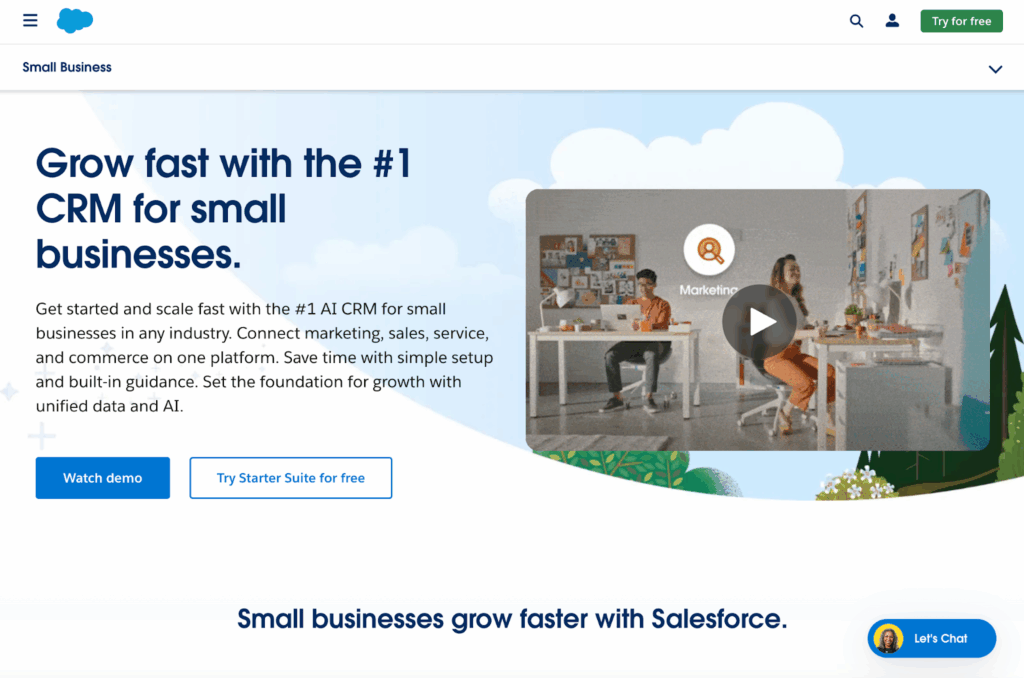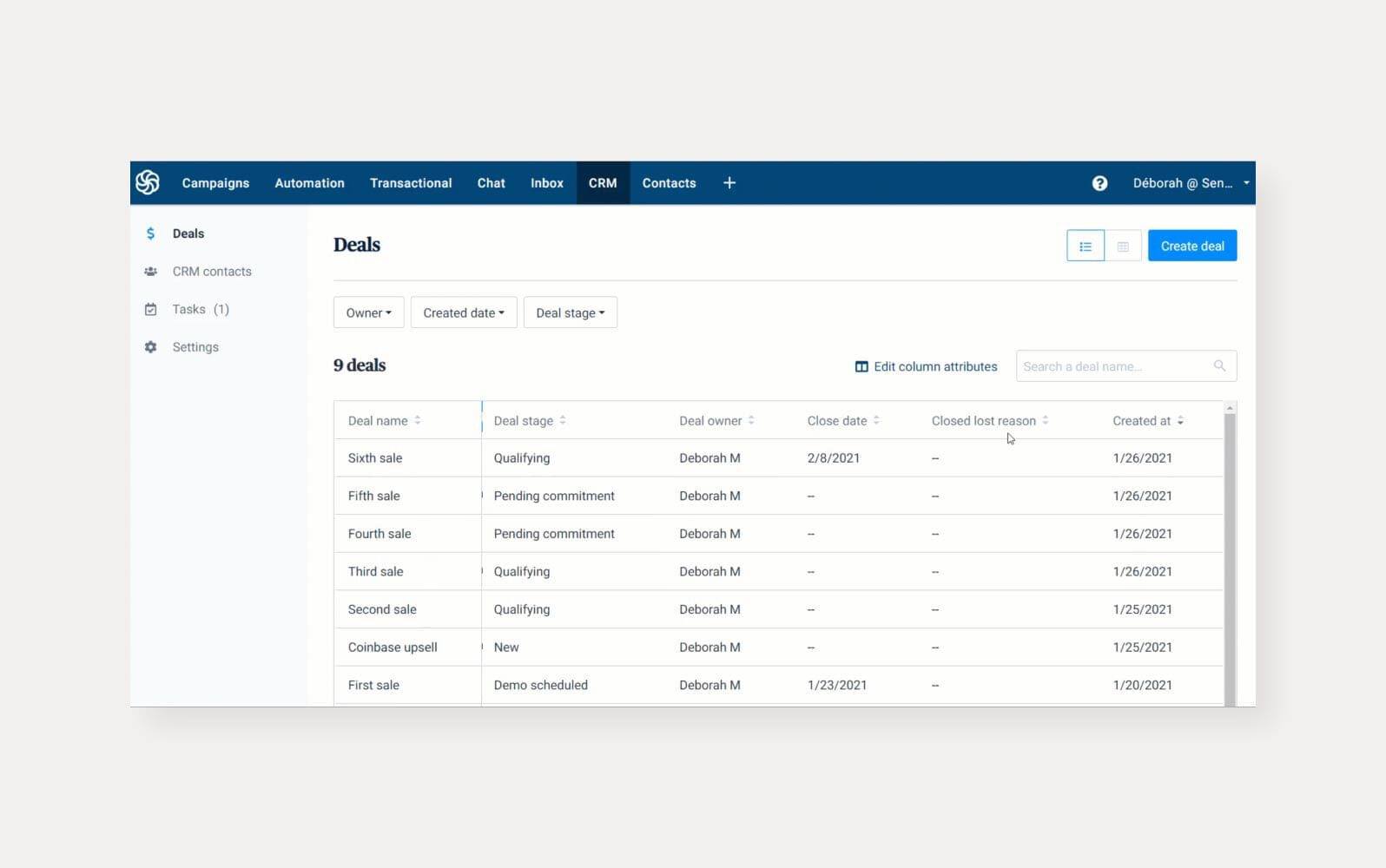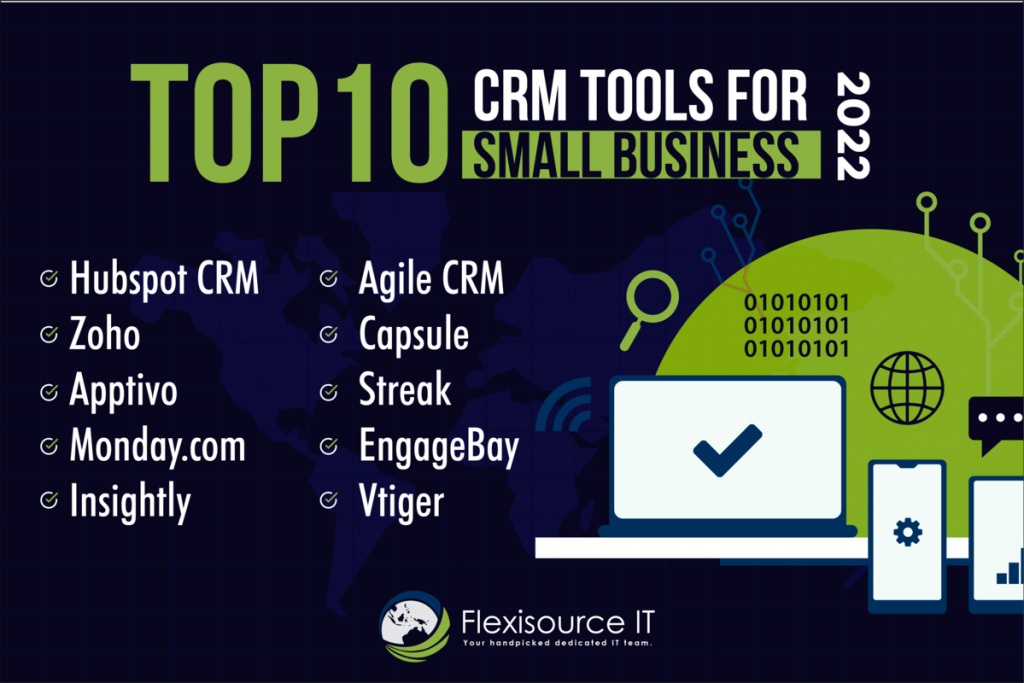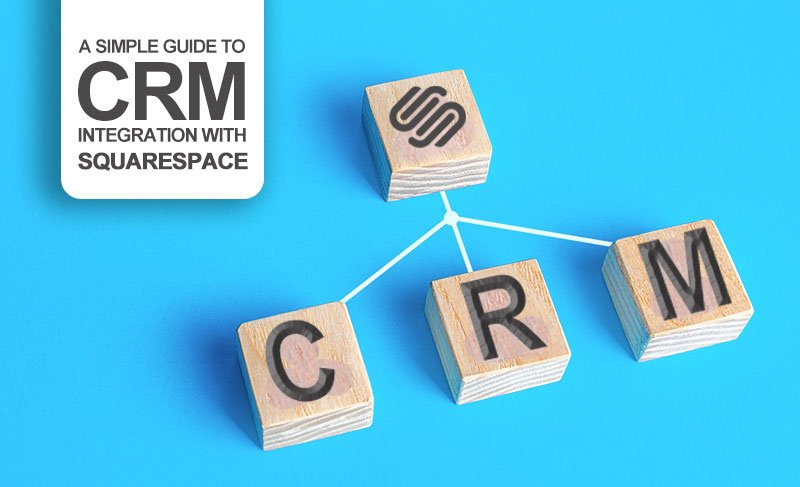
The Retail Revolution: Adapting and Thriving
The retail landscape has changed dramatically. Gone are the days when a friendly smile and a well-stocked shelf were enough. Today’s consumers are savvy, demanding, and have a plethora of choices at their fingertips. They expect personalized experiences, seamless interactions, and a deep understanding of their needs. For small retail businesses, competing in this environment can feel like David versus Goliath. However, there’s a secret weapon that can level the playing field: a Customer Relationship Management (CRM) system.
This isn’t just about keeping track of customers; it’s about building lasting relationships, streamlining operations, and ultimately, boosting your bottom line. This article delves into the world of CRM for small retail businesses, exploring its benefits, how to choose the right system, and how to effectively implement it to drive success.
What is a CRM and Why Does Your Small Retail Business Need One?
At its core, a CRM is a technology that helps you manage and analyze customer interactions and data throughout the customer lifecycle. It’s a centralized hub where you can store all your customer information, from contact details and purchase history to communication logs and preferences. Think of it as the digital brain of your customer relationships.
But why is this so crucial for a small retail business? Here are some compelling reasons:
- Enhanced Customer Relationships: CRM allows you to personalize interactions. You can remember birthdays, preferences, and past purchases, making each customer feel valued and understood.
- Improved Customer Service: With all customer data in one place, your team can quickly access information to resolve issues, answer questions, and provide exceptional service.
- Increased Sales and Revenue: CRM helps you identify sales opportunities, track leads, and nurture prospects, leading to more conversions and higher sales.
- Efficient Marketing: You can segment your customer base and tailor marketing campaigns to specific groups, increasing their effectiveness and ROI.
- Streamlined Operations: CRM automates tasks like appointment scheduling, email marketing, and order management, freeing up your time to focus on other important aspects of your business.
- Data-Driven Decision Making: CRM provides valuable insights into customer behavior, sales trends, and marketing performance, allowing you to make informed decisions.
- Competitive Advantage: In a crowded market, a CRM can give you a significant edge by helping you provide superior customer experiences and build stronger customer loyalty.
Key Features to Look for in a CRM for Small Retail Businesses
Choosing the right CRM system is crucial for its effectiveness. Different systems offer varying features and functionalities. Here’s a breakdown of the essential features you should look for:
1. Contact Management
This is the foundation of any CRM. It allows you to store and organize customer information, including contact details, addresses, and social media profiles. The ability to easily search, sort, and filter your contacts is essential.
2. Sales Automation
Look for features that automate sales tasks, such as lead tracking, opportunity management, and sales pipeline visualization. This will help you close deals faster and more efficiently.
3. Marketing Automation
Email marketing is a cornerstone of retail. Your CRM should allow you to create and automate email campaigns, segment your audience, and track campaign performance. Features like automated welcome emails, abandoned cart reminders, and promotional offers can significantly boost sales.
4. Customer Service and Support
A good CRM will have tools to manage customer inquiries, track support tickets, and provide self-service options like a knowledge base or FAQs. This can significantly improve customer satisfaction.
5. Reporting and Analytics
Real-time data and insightful reports are crucial for understanding your business performance. The CRM should provide detailed reports on sales, marketing, customer behavior, and other key metrics. This will help you identify areas for improvement and make data-driven decisions.
6. Integration Capabilities
Your CRM should integrate with other tools you use, such as your point-of-sale (POS) system, e-commerce platform, email marketing service, and social media channels. This will streamline your workflows and ensure data consistency.
7. Mobile Accessibility
In today’s fast-paced world, you need to be able to access your CRM on the go. Look for a system with a mobile app or a responsive design that works well on smartphones and tablets.
8. User-Friendly Interface
The system should be easy to use and navigate. A complicated CRM will be difficult to adopt and may not be used effectively by your team. Look for a clean, intuitive interface.
9. Scalability
Choose a CRM that can grow with your business. As your business expands, you’ll need a system that can handle increased data volume and user numbers.
10. Pricing and Support
Consider the pricing plans and the level of customer support offered. Make sure the price fits your budget and that you have access to the support you need.
Top CRM Systems for Small Retail Businesses: A Comparison
Here are some popular CRM systems that are well-suited for small retail businesses, along with their key features and considerations:
1. HubSpot CRM
Overview: HubSpot offers a free CRM that’s incredibly popular and easy to use. It’s a great option for businesses just starting with CRM. They also offer paid versions with more advanced features.
Key Features: Contact management, deal tracking, email marketing, sales automation, and reporting. Integrates well with other marketing tools.
Pros: Free version available, user-friendly interface, comprehensive features, excellent support and resources.
Cons: Free version has limitations, advanced features require paid plans.
2. Zoho CRM
Overview: Zoho CRM is a powerful and affordable option that offers a wide range of features for small businesses. It’s known for its customization options.
Key Features: Contact management, sales automation, marketing automation, customer support tools, and extensive reporting. Integrates with many third-party apps.
Pros: Affordable pricing, highly customizable, feature-rich, good for complex business needs.
Cons: Can be overwhelming for beginners, the interface can be less intuitive than others.
3. Pipedrive
Overview: Pipedrive is a sales-focused CRM that’s known for its visual pipeline management. It’s ideal for businesses that want a clear view of their sales process.
Key Features: Visual sales pipeline, lead tracking, deal management, sales automation, and reporting.
Pros: User-friendly interface, visual pipeline management, excellent for sales teams.
Cons: Limited marketing automation features, may not be ideal for businesses with complex customer support needs.
4. Freshsales
Overview: Freshsales is a CRM built by Freshworks, designed to be a comprehensive solution for sales teams. It is known for its ease of use and features for sales automation.
Key Features: Built-in phone and email, sales automation, lead scoring, and detailed analytics.
Pros: Easy to set up and use, good for sales-focused teams, affordable pricing.
Cons: Less feature-rich than some competitors, may not be ideal for businesses with complex marketing needs.
5. Agile CRM
Overview: Agile CRM is a versatile CRM solution that combines sales, marketing, and customer service features into one platform. It is known for its affordable pricing and ease of use.
Key Features: Contact management, sales automation, marketing automation, helpdesk support, and detailed analytics.
Pros: Affordable pricing, all-in-one platform, easy to use.
Cons: Some features may be less robust than those of competitors.
Note: The best CRM for your business will depend on your specific needs and budget. Consider your business size, sales process, marketing strategies, and customer service requirements when making your decision. It is always a good idea to try free trials of different CRM systems before committing to a paid plan.
Implementing a CRM: A Step-by-Step Guide for Retailers
Once you’ve chosen a CRM, the next step is to implement it. Here’s a practical guide to help you get started:
1. Define Your Goals and Objectives
Before you start, clearly define your goals. What do you want to achieve with your CRM? Do you want to increase sales, improve customer service, or streamline your marketing efforts? Having clear objectives will help you choose the right features and measure your success.
2. Data Migration
Gather all your existing customer data from various sources, such as spreadsheets, email databases, and point-of-sale systems. Clean and organize the data, removing duplicates and ensuring accuracy. Then, import the data into your CRM. Most CRM systems provide tools for importing data from CSV files or other formats.
3. Customization and Configuration
Customize the CRM to fit your business needs. Configure the settings, create custom fields, and set up your sales pipeline. This may involve configuring email templates, setting up automated workflows, and integrating with other tools.
4. Training Your Team
Provide comprehensive training to your team on how to use the CRM. Ensure that everyone understands the key features and how to use them effectively. Offer ongoing support and training to address any questions or issues.
5. Data Entry and Management
Establish a consistent process for entering and updating customer data. Encourage your team to regularly update customer information, log interactions, and track progress. Data accuracy is crucial for the CRM’s effectiveness.
6. Testing and Refinement
Test the CRM thoroughly to ensure that it’s working correctly. Identify any issues and make adjustments as needed. Continuously refine your CRM strategy to optimize its performance.
7. Integration with Other Systems
Integrate your CRM with other systems, such as your point-of-sale (POS) system, e-commerce platform, email marketing service, and social media channels. This will streamline your workflows and ensure data consistency.
8. Monitoring and Evaluation
Regularly monitor your CRM’s performance and evaluate its effectiveness. Analyze the data and reports to identify areas for improvement. Make adjustments to your strategy as needed to maximize the value of your CRM.
Leveraging Your CRM for Retail Success: Practical Strategies
Once your CRM is up and running, here are some strategies to maximize its impact:
1. Personalize Customer Interactions
Use the data in your CRM to personalize your interactions with customers. Send targeted email campaigns, offer personalized product recommendations, and remember important dates like birthdays and anniversaries. This will make customers feel valued and increase their loyalty.
2. Segment Your Customer Base
Segment your customer base based on demographics, purchase history, and other criteria. This will allow you to tailor your marketing messages and offers to specific groups, increasing their effectiveness.
3. Automate Your Marketing Efforts
Use marketing automation features to streamline your marketing activities. Set up automated email campaigns, such as welcome emails, abandoned cart reminders, and promotional offers. This will save you time and improve your marketing ROI.
4. Track and Analyze Sales Performance
Use your CRM to track and analyze your sales performance. Monitor sales trends, identify your top-selling products, and analyze the effectiveness of your sales strategies. This will help you make data-driven decisions to improve your sales results.
5. Improve Customer Service
Use your CRM to provide exceptional customer service. Track customer inquiries, resolve issues quickly, and provide personalized support. This will increase customer satisfaction and build customer loyalty.
6. Use Data to Drive Decisions
Regularly review the data and reports in your CRM to identify areas for improvement. Make data-driven decisions about your sales, marketing, and customer service strategies. This will help you optimize your business performance.
7. Gather Customer Feedback
Use your CRM to gather customer feedback through surveys, polls, and other methods. This will help you understand your customers’ needs and preferences. Take this feedback and use it to improve your products, services, and overall customer experience.
8. Loyalty Programs
Integrate your CRM with a loyalty program to reward your best customers. Track customer purchases and reward points, offer exclusive discounts and promotions, and create a sense of community. This will keep customers coming back and increase their lifetime value.
Overcoming Challenges: Common Pitfalls and Solutions
Implementing a CRM isn’t always smooth sailing. Here are some common challenges and how to overcome them:
1. Poor Data Quality
Challenge: Inaccurate or incomplete customer data can undermine the effectiveness of your CRM.
Solution: Implement a data cleansing process. Regularly review and update your data, remove duplicates, and ensure that your data is accurate and complete.
2. Lack of User Adoption
Challenge: If your team doesn’t use the CRM, it won’t be effective.
Solution: Provide adequate training, encourage team members to use the system, and highlight the benefits of using the CRM. Make sure the CRM is easy to use and that it integrates well with their existing workflows.
3. Integration Issues
Challenge: Difficulty integrating your CRM with other systems can create data silos and hinder your workflows.
Solution: Choose a CRM that integrates well with your existing systems. Seek support from the CRM provider if you encounter any integration issues.
4. Scope Creep
Challenge: Trying to implement too many features at once can overwhelm your team and slow down the implementation process.
Solution: Start with the essential features and gradually add more features as your team becomes more comfortable with the system. Prioritize the features that will have the biggest impact on your business.
5. Lack of Strategy
Challenge: Without a clear strategy, your CRM implementation may lack direction and purpose.
Solution: Define your goals and objectives before implementing the CRM. Develop a clear plan for how you will use the CRM to achieve your goals. Regularly review and refine your strategy as needed.
The Future of CRM in Retail: Trends to Watch
The retail landscape is constantly evolving, and CRM technology is keeping pace. Here are some trends to watch:
1. Artificial Intelligence (AI) and Machine Learning
AI and machine learning are being used to personalize customer experiences, automate tasks, and provide insights into customer behavior. Expect to see more AI-powered features in CRM systems in the future.
2. Mobile CRM
Mobile CRM solutions are becoming increasingly important. Retailers need to be able to access their CRM data and interact with customers on the go.
3. Social CRM
Social media is an integral part of the customer experience. CRM systems are integrating with social media platforms to provide a more holistic view of the customer.
4. Enhanced Personalization
Customers expect personalized experiences. CRM systems are becoming more sophisticated in their ability to personalize interactions, product recommendations, and marketing messages.
5. Omnichannel Integration
Customers interact with businesses across multiple channels. CRM systems are integrating with various channels to provide a seamless customer experience.
Conclusion: Embracing CRM for Retail Supremacy
In the competitive world of retail, a CRM system is no longer a luxury, it’s a necessity. By implementing the right CRM and using it effectively, small retail businesses can build stronger customer relationships, improve their sales and marketing efforts, and streamline their operations. The benefits extend beyond simply managing customer data; it’s about creating a customer-centric business that thrives in today’s dynamic retail environment.
Investing in a CRM is an investment in your future. By embracing this technology, you can unlock the potential of your retail business and achieve sustainable success. Start exploring your options today, and take the first step towards building lasting customer relationships and driving growth.


